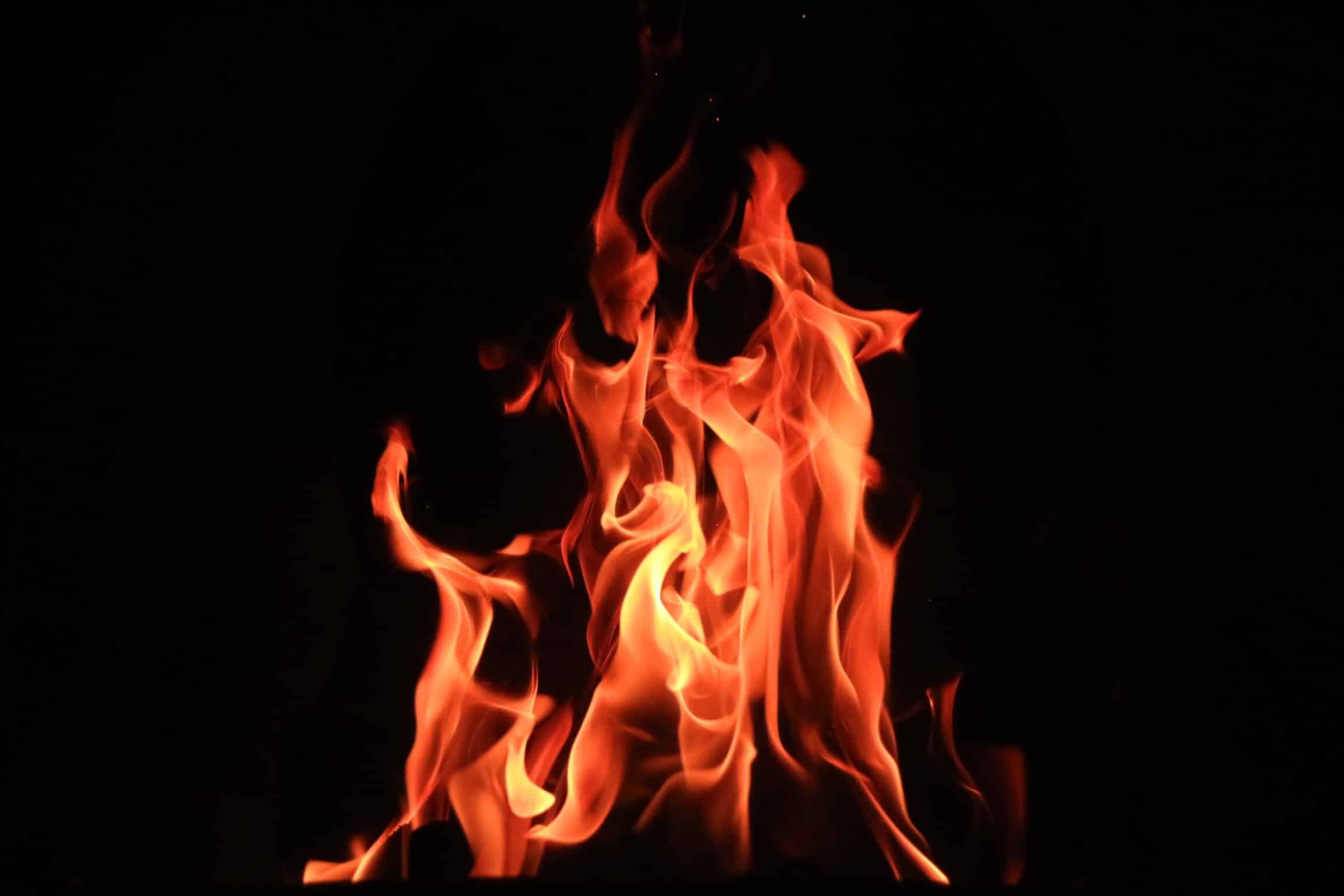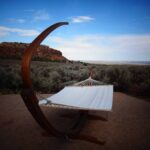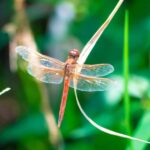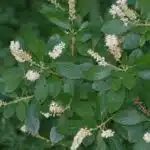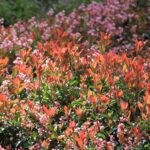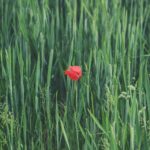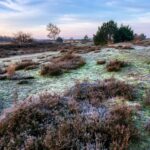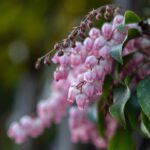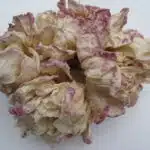Hydrangeas have been a staple of gardens for centuries, bringing a splash of colour and life to any outdoor space. The Quick Fire Hydrangea is a relatively new variety that has quickly become one of the most popular due to its quick blooming and beautiful flowers. In this article, we will take you on an exciting journey through the world of growing these amazing flowers, ensuring your garden is blooming with life in no time.
The Quick Fire Hydrangea is as easy to care for as it is beautiful; like a butterfly emerging from its chrysalis, you can enjoy the vibrant colours without too much effort or worry. With just a few simple steps you can ensure your Quick Fire Hydrangea grows healthy and strong, providing years of enjoyment. We will discuss the best soil types, watering techniques and fertilizing methods so that your plant can reach its full potential.
Finally, we’ll talk about how to prune your Quick Fire Hydrangea correctly so that you can get the best blooms from your plants year after year. So if you’re looking for an easy way to bring colour and joy into your garden then look no further than the Quick Fire Hydrangea! Join us now as we explore how to grow and care for this wonderful flower.
Overview Of Quick Fire Hydrangea
Quick Fire Hydrangea (Hydrangea paniculata ‘Bulk’) is a deciduous flowering shrub that produces an abundance of white blooms, each with deep pink or red centers. This cultivar was developed for its seasonal display of showy flowers and its ability to thrive in a variety of growing conditions. Its name comes from the fact that it blooms quickly after bud set and can flower as early as mid-summer. Quick Fire Hydrangea makes an attractive addition to any garden, especially when planted in masses or used as a hedge.
When grown in the right conditions, Quick Fire Hydrangea can reach heights of four to six feet tall and wide and have an upright form with lance-shaped leaves. The buds are usually pink but change to white once they open. When the flowers fade they turn dark pink or purple, lasting into late summer or early fall. Gardening enthusiasts will be delighted by its quick transition between flower colors throughout the season.
Caring for Quick Fire Hydrangea is easy; it thrives best in well-drained soil and full sun to part shade exposure. It is fairly drought tolerant once established, but benefits from regular watering during dry spells or periods of extreme heat. Pruning should be done in late winter to early spring before new growth appears, although old stems may also need light pruning throughout the year if needed.
Best Growing Conditions For Quick Fire Hydrangea
Wonderfully, Quick Fire Hydrangeas are one of the few flowering shrubs that thrive in full sun and high temperatures. But to ensure success with these captivating plants, it’s important to understand their best growing conditions. So let’s dive in!
Firstly, Quick Fire Hydrangeas prefer well-drained soils that are high in organic matter. They have moderate water requirements, so regular watering is necessary during dry periods. For optimal growth, they need an acidic pH of 5.5 to 6.5 and regular applications of fertilizer. To help retain moisture and protect against weeds and disease, mulch the soil around the base of your plant.
Additionally, full sun is ideal for Quick Fire Hydrangeas, however they can tolerate partial shade provided there is still plenty of sunlight during the day. If planted in too much shade or overly rich soils, this will result in excessive growth at the expense of flower production. Pruning should be done after flowering has finished in order to promote healthy new growth for next season’s blooms.
The key to a successful Quick Fire Hydrangea is providing them with consistent care throughout the growing season – from well drained soils to ample sunlight – and you’ll be rewarded with years of beautiful blooms!
Planting Quick Fire Hydrangea
Planting Quick Fire Hydrangea is an essential step in growing this beautiful shrub. It’s important to get the right location and soil conditions for these dense-flowered plants. Here are some tips that will help you achieve success when planting your own Quick Fire Hydrangeas.
First, choose a location with plenty of sunlight for best results. This shrub can also tolerate part shade but keep in mind that it won’t bloom as heavily if planted in too much shade. The area should also have good drainage, as standing water can cause root rot and other plant diseases.
When it comes to soil, Quick Fire Hydrangea prefer well-drained soils that are slightly acidic or neutral (pH 6–7). Adding organic matter such as compost or peat moss can help improve soil structure and increase water retention in clay soils. Avoid planting near foundations or sidewalks; these areas often lack proper drainage and may cause root rot over time.
Finally, select a planting site that is protected from strong winds or cold winter temperatures as this shrub is prone to winter dieback if exposed to too much cold weather. Once you’ve selected the perfect spot, dig a hole twice the size of the pot the hydrangea arrived in, backfill with amended soil, then water thoroughly. With the right conditions, your Quick Fire Hydrangeas will be ready to thrive!
Soil Requirements For Quick Fire Hydrangea
When it comes to soil requirements for Quick Fire Hydrangea, the first consideration is pH. It should range between 5.5 and 6.5 for optimal growth. Additionally, soil should be well-drained and moist. As such, a mix of sand and clay is ideal. This will ensure that moisture is held in the soil while still being able to drain properly.
The second consideration is nutrients. The shrub does not require too many; however, adding some organic matter such as compost or fertilizer once or twice a year can help promote healthy growth and blooms during the growing season.
Finally, mulching around the base of the plant while keeping it away from the stems can help hold in moisture and add nutrients to the soil over time. Mulching also helps protect against weeds, which can compete with the hydrangea for resources if left unchecked. With these considerations taken into account, Quick Fire Hydrangea should thrive in any garden setting!
Sunlight Requirements For Quick Fire Hydrangea
Growing and caring for quick fire hydrangea is like building a strong house. You need to start with the right foundation by providing the plant with the soil and sunlight it needs to thrive. Sunlight is one of the most important elements in this process.
When it comes to sunlight, quick fire hydrangea prefers full sun or partial shade. It’s best to keep them in an area that receives at least four hours of direct sunlight each day. If you don’t have an area that meets this requirement, then you can supplement with artificial light such as grow lights or LED bulbs. Be sure to give your hydrangea plenty of light during the day but avoid exposure to harsh, direct sunlight from 11AM-2PM when temperatures tend to be highest.
It’s also important that you provide quick fire hydrangea with adequate air circulation and protection from windy conditions so they don’t dry out too quickly. A fan blowing on low speed can help ensure your plants get enough air circulation without stressing them out too much. By following these guidelines, you will be well on your way to a lush and beautiful garden all season long!
Next up, let’s discuss how to properly water and fertilize your quick fire hydrangea for optimal growth and health…
Watering And Fertilizing Quick Fire Hydrangea
Watering and fertilizing quick fire hydrangea is like giving your garden a refreshing drink of water. Just like humans need water to survive, plants need it to thrive. When you give your quick fire hydrangea the right amount of water and fertilizer, it will reward you with lush foliage and abundant flowers.
As a specialist in botany and gardening, I know that quick fire hydrangea needs regular watering during hot weather. The soil should be kept moist but not soggy. If the soil becomes too dry, the leaves will begin to wilt and the blooms will become sparse. During cold weather, reduce watering to only when needed. In addition to regular watering, an occasional application of fertilizer can help keep your quick fire hydrangea healthy and vigorous. It’s best to use a balanced fertilizer that is specifically designed for flowering shrubs such as this one. Apply the fertilizer every four weeks during the growing season for optimal results.
Watering and fertilizing your quick fire hydrangea is an essential part of caring for it, but pruning is also important for maintaining its shape and encouraging new growth. With proper pruning techniques, you can create a bushier plant with more blooms than ever before!
Pruning Quick Fire Hydrangea
It is widely believed that pruning quick fire hydrangea improves growth, flowering, and overall health of the plant. To better understand this theory, let’s take a closer look at how to effectively prune quick fire hydrangea:
- Prune during early spring before new growth begins.
- Remove dead or diseased branches for improved aesthetics and to eliminate potential spread.
- Shape the shrub by selectively removing sections of older branches to promote air circulation and light penetration.
- Cut back just above a bud facing outward from the center of the plant for best results.
As an expert in botany and gardening, I recommend pruning quick fire hydrangea with these steps in mind. Pruning should be done carefully as it can drastically change the appearance of your plant if done improperly. Moreover, pruning stimulates new growth on your quick fire hydrangea which can lead to increased flowering if done correctly. As such, you will want to ensure that you are familiar with the basics of proper pruning techniques before attempting this task yourself.
Now that we have covered the basics of pruning quick fire hydrangea, it is important to consider other factors such as controlling pests and diseases that may threaten your plant’s health in order to keep it looking its best all season long!
Controlling Pests And Diseases For Quick Fire Hydrangea
Like a colorful beacon in the garden, Quick Fire Hydrangea is a sight to behold. With its showy blooms and ease of care, it’s no wonder this shrub is popular among gardeners. But to ensure that your Quick Fire Hydrangea remains healthy and vibrant, controlling pests and diseases is key.
Pests such as aphids, whiteflies, mealybugs, and scale can cause significant damage to Quick Fire Hydrangea if not controlled. To avoid infestations, regularly check the leaves of your shrub for signs of pests or eggs. If present, use an insecticidal soap or neem oil to treat the affected areas. Other steps you can take include keeping the soil around your hydrangea free from debris and weeds that can provide hiding places for pests.
Diseases are also a threat to Quick Fire Hydrangeas if not managed properly. Fungal diseases like powdery mildew and rust can quickly spread through an entire shrub if left unchecked. The best way to prevent disease is by watering early in the day so the foliage has time to dry before nightfall when fungal spores tend to spread more readily. It’s also important to provide proper air circulation around your shrub by avoiding overcrowding with other plants.
By taking simple precautions such as these, you can maintain a healthy Quick Fire Hydrangea with minimal effort on your part!
Propagating Quick Fire Hydrangea
Propagating quick fire hydrangea can be a fascinating experience, offering gardeners the opportunity to expand their display of this beautiful shrub. From cuttings to layering, there are several ways to propagate these plants and add them to your garden. With a few simple steps, you can start creating your own lush hydrangea beds.
Firstly, the most common way to propagate quick fire hydrangeas is through cuttings. This method involves taking sections of stems with healthy buds and replanting them in pots filled with moist soil mix or perlite. Once planted, keep the cuttings lightly moist and in bright light but out of direct sunlight until they take root.
Layering is another popular propagation technique that requires a bit more patience than cuttings but promises more success overall. To layer quick fire hydrangeas, select a low-lying stem from an existing bush and bury it under 2-3 inches of soil leaving the tip exposed for light. After four months or so roots will have formed on the buried stem, allowing you to carefully detach it from the parent plant and transplant it into its own potting container.
In addition to these two methods, there are other options available for propagating quick fire hydrangeas such as:
• Division: Digging up existing mature plants and then dividing them into multiple pieces before replanting them in different areas of the garden • Seedlings: Collecting seed heads after flowering season and sowing them directly into containers or plot beds • Grafting: Splicing together two different varieties of hydrangea onto one rootstock
No matter which technique you choose for propagating quick fire hydrangea, all require similar care during the process such as keeping the soil consistently moist yet not soggy and providing adequate light without direct sun exposure. With proper attention and timing you too can be rewarded with beautiful blooms year after year!
Common Problems With Quick Fire Hydrangea
Quick Fire Hydrangea are a popular variety of hydrangea that can be grown in a variety of climates. However, as with any plant, they may experience problems in certain conditions. In this section, we’ll discuss some of the more common problems you may encounter while growing Quick Fire Hydrangeas.
The most common problem is overwatering. Too much water can cause root rot and other fungal diseases that will harm the plant’s health and growth potential. It’s important to only water your Quick Fire Hydrangea when the soil is dry and then provide deep watering once a week or so. You should also avoid getting the blooms wet since this can cause them to wilt or discolor prematurely.
In addition, Quick Fire Hydrangeas are susceptible to leaf spot, powdery mildew, and aphids. Leaf spot appears as small brown spots on the leaves while powdery mildew appears as a white powdery coating on the foliage. To tackle both of these issues, it’s important to keep your plants pruned correctly and provide them with adequate air circulation. Aphids can be controlled by spraying the foliage with an appropriate insecticidal soap solution every few weeks during peak season.
By taking proper care of your Quick Fire Hydrangea, you can help ensure its health and help it reach its full potential! With some basic gardening knowledge and attention to detail, you’ll be able to successfully manage any issues that arise throughout its growth cycle. Now let’s look at how we can prepare our Quick Fire Hydrangea for winter…
Winterizing Quick Fire Hydrangea
Winterizing quick fire hydrangea is an important part of caring for them in colder climates. Hydrangeas are hardy in zones 5-9, but if you live in a cold winter climate it’s wise to take steps to protect your plants during the winter months. For starters, prune the shrubs down by about a third before the first frost. This will help reduce damage from ice and snow during the winter months. It’s also a good idea to add a layer of mulch around the base of your shrubs for added insulation. This will keep the root zone warm and provide extra protection from cold temperatures.
Another key step in winterizing quick fire hydrangea is providing adequate moisture throughout the cold season. Keep your plants watered regularly until they go dormant in late autumn or early winter. If you receive regular snowfall, that can be enough to provide additional moisture to keep your plants healthy through the winter months.
Finally, if you experience extended periods of extremely low temperatures, consider covering your shrubs with burlap or another breathable fabric for extra protection against freezing temperatures and desiccation from wind chill. Be sure to remove any coverings when temperatures begin to rise again so that air can circulate freely around the plant and prevent potential disease problems from occurring due to trapped moisture or humidity buildup beneath any coverings. With these simple steps, you can ensure that your quick fire hydrangea make it through the cold season unscathed.
Tips For Growing Quick Fire Hydrangea
Growing quick fire hydrangea is a rewarding experience. It requires patience, attention and knowledge of the plant’s needs, but the end result is worth the effort. While caring for this type of hydrangea, it is essential to understand its characteristics and requirements for optimal growth. With proper cultivation techniques, you can create beautiful clusters of blooms that last throughout the season.
When growing quick fire hydrangea, one should ensure that it has sufficient water and sunlight. Watering deeply once per week is ideal for maintaining moisture levels in the soil without overwatering. Additionally, providing partial shade from midday sun will help keep leaves from scorching during hot summer days. For best results, fertilize with a slow-release formula every three months to provide necessary nutrients for successful blooms in late spring and early summer.
Finally, pruning is important when caring for quick fire hydrangea as well. Prune away dead or diseased branches during the winter months to promote healthy growth during warmer weather. Utilizing these methods of care will help guarantee success when cultivating your own quick fire hydrangea and will enable you to enjoy its beauty all season long!
Benefits Of Growing Quick Fire Hydrangea
Growing quick fire hydrangea is like a gardener’s version of the alchemist’s dream. When the soil and sun are just right, these brilliant blossoms burst forth with a vibrancy that rivals any other flower in the garden. The benefits of growing quick fire hydrangea are numerous and can’t be overlooked.
For starters, they’re exceptionally easy to care for and require very little maintenance. Once planted, they will thrive on their own with minimal effort from you. They also don’t need to be trimmed or groomed like many other flowers do, so you won’t have to worry about pruning them back at any point during their blooming season. Additionally, they tend to be drought tolerant, making them an excellent option for areas prone to dry spells.
Finally, quick fire hydrangeas bring a certain level of brightness and cheerfulness to any garden. Their unique colors create a stunning display when planted together in mass plantings and are sure to draw attention from your neighbors and passersby alike. Plus, with proper planting techniques and regular care, you can enjoy their beauty year after year without much hassle or worry.
Quick fire hydrangeas offer something special to every gardener; whether it’s ease of care or a stunning array of colors, there’s no doubt that these plants will bring joy and delight all season long!
Uses For Quick Fire Hydrangea
The Quick Fire Hydrangea is an interesting and unique flower, with its evergreen-like foliage and bright white blooms that appear several times throughout the season. It’s a sight to behold in any garden, providing a stunning display of color and texture. But beyond its beauty, the Quick Fire Hydrangea offers many uses for homeowners:
• Ornamental: The Quick Fire Hydrangea makes an excellent addition to any landscape design. For those who prefer a low-maintenance plant with no pruning required, this is an ideal choice. The mounded shape of the shrub and the showy clusters of flowers are perfect for adding interest to gardens or as edging along walkways or driveways.
• Container Planting: The Quick Fire Hydrangea is great for container planting as well. Its attractive foliage and bright blossoms bring beauty to porches, decks and patios when planted in containers. This is a great option for those who don’t have much space in their yard but still want to enjoy the beauty of this hydrangea variety.
• Cut Flowers: Its beautiful blooms can be cut and used in vases indoors or outdoors and they make lovely additions to floral arrangements. They can also be dried out and used as dried flowers in craft projects or wreaths, adding lasting color to your home décor.
The Quick Fire Hydrangea has so many uses around the home and garden that it’s worth taking the time to learn how to properly grow and care for it so you can enjoy all its benefits!
Troubleshooting Quick Fire Hydrangea
Troubleshooting Quick Fire Hydrangea is an important part of the growing process. When done right, this shrub can bring a lot of beauty and color to your garden. However, when things go wrong, it’s important to know how to handle them. In this article, we’ll cover some of the most common issues you may encounter while growing Quick Fire Hydrangea and how to deal with them.
One of the biggest problems with Quick Fire Hydrangea is its susceptibility to pests and diseases. If you notice any discoloration or wilting on your plant, it’s likely due to an infestation or infection. To combat this issue, make sure you’re using a regular preventative spray that targets both common pests and diseases. It’s also important to regularly inspect your plant for signs of distress and take action quickly if any are found.
Finally, Quick Fire Hydrangea are prone to extreme weather conditions such as drought or flooding. If your area experiences either of these situations frequently, consider investing in adequate drainage systems and irrigation systems that will keep your plants hydrated during dry spells while preventing excess water from accumulating during rainier months. Additionally, providing extra mulch around the base of the shrub can help protect its roots from extreme temperatures during winter months.
The key to successful troubleshooting with Quick Fire Hydrangea is being proactive in monitoring their health and taking steps as soon as possible if necessary. Keeping an eye out for potential issues will save you time, money and stress in the future!
Frequently Asked Questions
How Often Should I Water And Fertilize Quick Fire Hydrangea?
When it comes to caring for Quick Fire Hydrangea, there are certain steps you need to take to ensure its success. As a gardener, you’ve no doubt come across the adage that “the best fertilizer is the gardener’s shadow” – and this plant is no exception. Here’s what you should keep in mind when tending to your Quick Fire Hydrangea:
First, it’s important to water regularly. Aim for 1-2 inches per week – enough to keep the soil moist but not soggy. Also, be sure to fertilize your Quick Fire every two weeks during the growing season with a balanced fertilizer containing nitrogen, phosphorus and potassium.
Secondly, prune your Quick Fire Hydrangea as needed throughout the year. To maintain shape and encourage new growth, trim away spent blooms and dead or damaged branches in early spring. Additionally, you can deadhead flowers after they’ve faded if desired. Here’s a list of tools you’ll need for successful pruning: • Pruners • Loppers • Hand saw
Finally, mulch around your Quick Fire Hydrangea with organic material such as pine needles or leaf litter in order to conserve moisture and keep weeds at bay. This will also add beneficial nutrients back into the soil as the mulch decomposes over time. Keeping these simple tips in mind will help ensure healthy growth and beautiful blooms for years to come!
What Are The Benefits Of Growing Quick Fire Hydrangea?
Growing quick fire hydrangea is an excellent choice for gardeners looking to add a beautiful and unique flowering shrub to their garden. This variety of hydrangea produces stunning deep pink and white blooms, making it an eye-catching addition to any outdoor space. Beyond its beauty, there are numerous benefits to growing quick fire hydrangea that make it an ideal choice for any gardener.
First and foremost, quick fire hydrangea is incredibly low maintenance. Once established, this plant requires minimal effort on the part of the gardener, making it a great option for those who may not have much experience with gardening. Additionally, this variety of hydrangea is drought tolerant and can withstand long periods without water or irrigation – perfect for anyone living in a dry climate.
Finally, another major benefit of growing quick fire hydrangea is its versatility in different soil types. This type of hydrangea will grow happily in both acidic and alkaline soils, allowing you to plant it almost anywhere in your garden regardless of the pH level. As such, you won’t need to put as much effort into creating the perfect environment for your plant before planting it as you would with other plants that require more precise soil conditions.
From its low maintenance needs to its adaptability in different soils, there are many reasons why quick fire hydrangea makes an excellent choice for any garden or outdoor space. With proper care and attention, this beautiful flowering shrub will bring many years of enjoyment to your home or landscape.
Are There Any Pests Or Diseases I Should Be Aware Of When Growing Quick Fire Hydrangea?
When it comes to taking care of Quick Fire Hydrangea, gardeners should be aware of potential pests and diseases. According to statistics, over 1.5 million species of plants can be affected by pests or diseases. When growing Quick Fire Hydrangea, one should pay attention to the signs and symptoms that could indicate an infestation or infection. This type of hydrangea is relatively resistant to most common pests and diseases, however, some fungal issues such as powdery mildew and root rot can occur if conditions are not ideal.
By providing the necessary soil drainage conditions and avoiding overcrowding of plants, gardeners can prevent the spread of these fungi from occurring in their Quick Fire Hydrangea beds. Furthermore, monitoring for any insect activity on the plants will help to identify any potential pest issues early on before they become a problem. If a pest infestation is identified, there are many methods available for controlling them such as biological controls and chemical sprays.
It is important for gardeners to remain vigilant when caring for their Quick Fire Hydrangea by regularly checking for signs of disease or insects on their plants and taking appropriate action when necessary. By doing this, they will be able to enjoy vibrant blooms all season long without worrying about any potential pest or disease issues impacting their hydrangeas.
How Do I Propagate Quick Fire Hydrangea?
Quick Fire Hydrangea, with its beautiful and vibrant flowers, is an attractive addition to any garden. But when it comes to propagation, this particular type of hydrangea can be especially tricky. So how do you go about propagating Quick Fire Hydrangea?
The most common method of propagating Quick Fire Hydrangea is through softwood cuttings. To start, take a cutting from a healthy plant in early summer and remove all but the top two sets of leaves. Dip the cut end into hormone rooting powder and then place the cutting into a pot filled with well-draining soil. Water thoroughly, cover the pot with plastic wrap or a humidity dome and place it in a warm location out of direct sunlight. After several weeks, you should see new growth appearing on the cuttings–this means that they have successfully rooted!
However, there is also another method for propagating Quick Fire Hydrangea: layering. This involves taking a branch from an existing plant and partially burying it in soil until roots are formed at the nodes along the stem. Once this occurs, you can separate the rooted section from its parent plant and transplant it to its new home. Layering works best in spring when plants are actively growing and can be done without causing too much stress to your existing shrub.
Propagating your own Quick Fire Hydrangea may seem like a daunting task at first, but by following these steps you will be able to create beautiful plants that will last for years to come! With patience and care you can easily increase your garden’s beauty with this lovely variety of hydrangea.
Is There Anything Special I Need To Do To Winterize Quick Fire Hydrangea?
Have you ever wondered what special steps you need to take to winterize your Quick Fire Hydrangea? It’s a common question from many gardeners who want the best for their beloved plants. To ensure that your hydrangeas survive through the colder months, here are some essential steps for winterizing:
First, it’s important to remember that Quick Fire Hydrangeas are not particularly cold-hardy. To prepare these plants for winter weather, you should mulch around them with an organic material such as wood chips or shredded bark. This will help insulate their roots and keep them warmer during freezing temperatures. Additionally, you can cover them with burlap or other fabric if temperatures drop below 10 degrees Fahrenheit.
Second, it’s important to prune back your Quick Fire Hydrangea in late fall or early winter before any hard freezes occur. Pruning helps reduce the amount of foliage on the plant and prevents any potential damage from snow or ice buildup. You should also remove any dead or diseased branches at this time.
Finally, be sure to water your Quick Fire Hydrangea thoroughly in early autumn so that its roots have access to moisture throughout the winter months. This will also help prevent branch dieback due to dehydration. If necessary, use a slow-release fertilizer in late fall for added nutrition during dormancy.
By following these tips, you can easily prepare your Quick Fire Hydrangea for winter and ensure that it blooms beautifully when spring arrives!
Conclusion
Quick Fire Hydrangea is a versatile and eye-catching shrub that can bring life to any garden. Its vibrant blooms are sure to draw attention and admiration from passersby. With proper care, this plant can provide years of enjoyment for any gardener.
Watering and fertilizing regularly will keep the Quick Fire Hydrangea healthy and thriving. Be sure to watch out for pests and diseases that could damage the shrub. Propagating by cuttings is an easy way to increase your stock of these beautiful plants. Lastly, winterization may be necessary depending on your area’s climate; mulching and covering will help protect it from frost damage during colder months.
By following these guidelines, you will be able to enjoy the beauty of the Quick Fire Hydrangea in your garden for many seasons to come. This hardy shrub will add a touch of brilliance with its vivid blooms that are sure to put a smile on anyone’s face!

